My easy sourdough bread recipe is perfect for enjoying on its own or using for sandwiches! I’ll be walking you in detail through every step so you can learn how to make perfect sourdough like a pro. Recipe includes a how-to video!
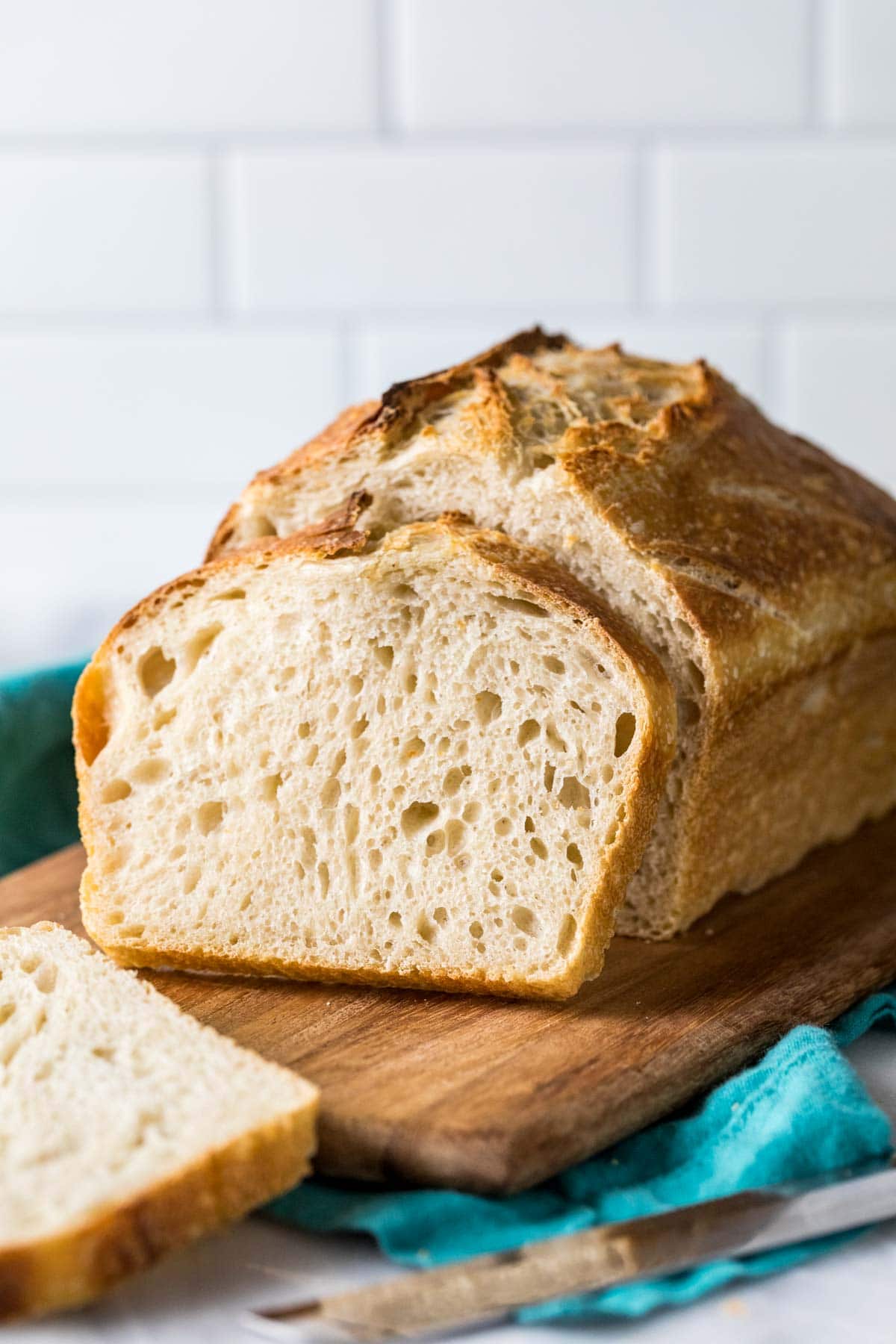
The Best Sourdough Bread Recipe
My easy homemade sourdough bread is the only bread we eat in my household anymore. In fact, I make 2-3 loaves a week and keep a stockpile in my freezer at all times (handy for making sourdough homemade croutons and breadcrumbs)! And once you try it… well, I think you will, too.
That’s because there’s a lot to love about sourdough bread. First and foremost, it has a high nutritional value and none of the additives (no added sugar, either) you’ll find in most store-bought breads. It also tastes amazing: classic, hearty bread (that’s not overly sour) with a thick, crusty exterior and a soft, springy interior.
But what I think you’ll love most about my recipe is how wonderfully versatile it is. It’s ideal both for dipping in soup, serving as a side with a salad, or using as a sandwich; it also makes an awesome grilled cheese that pairs beautifully with my tomato soup!
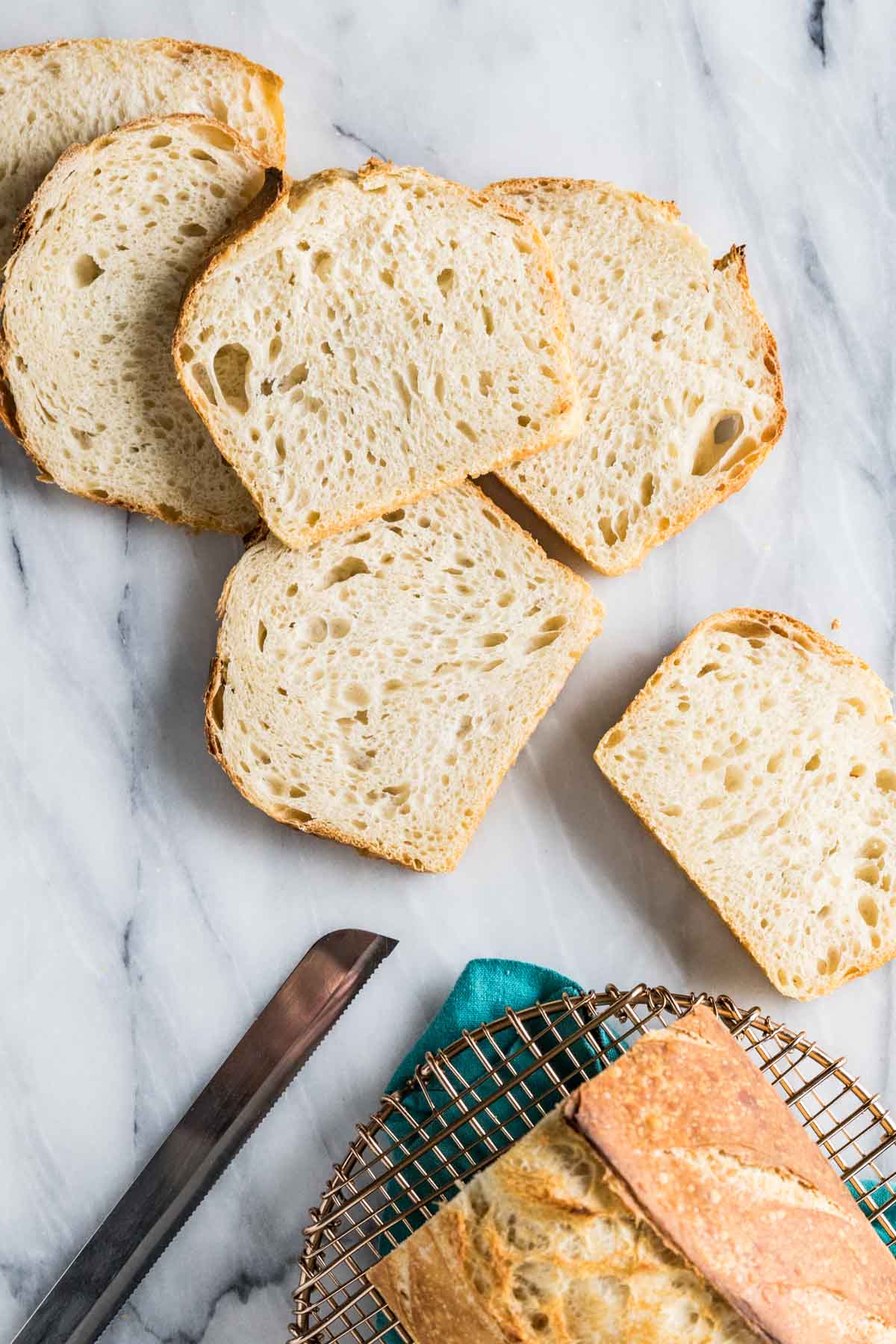
Homemade Sourdough is Easier Than You Think!
Making sourdough bread at home is shockingly easy, especially if you use the sourdough starter I shared last week. It is time consuming and you must have patience, but the work itself is very approachable and I wanted to share a version that was easy to follow–perfect for beginners and advanced sourdough bakers alike.
There’s no kneading involved; instead, we’ll use the easy process of stretching and folding, which develops the gluten much like kneading would, but is better suited for higher hydration dough like sourdough. There’s also no mixer or fancy equipment needed with my recipe — you don’t even need a banneton or a Dutch oven, just a pair of bread pans!
Let’s get started (and after you try it, pat yourself on the back and leave me a comment to let me know how you like it!).
What You Need
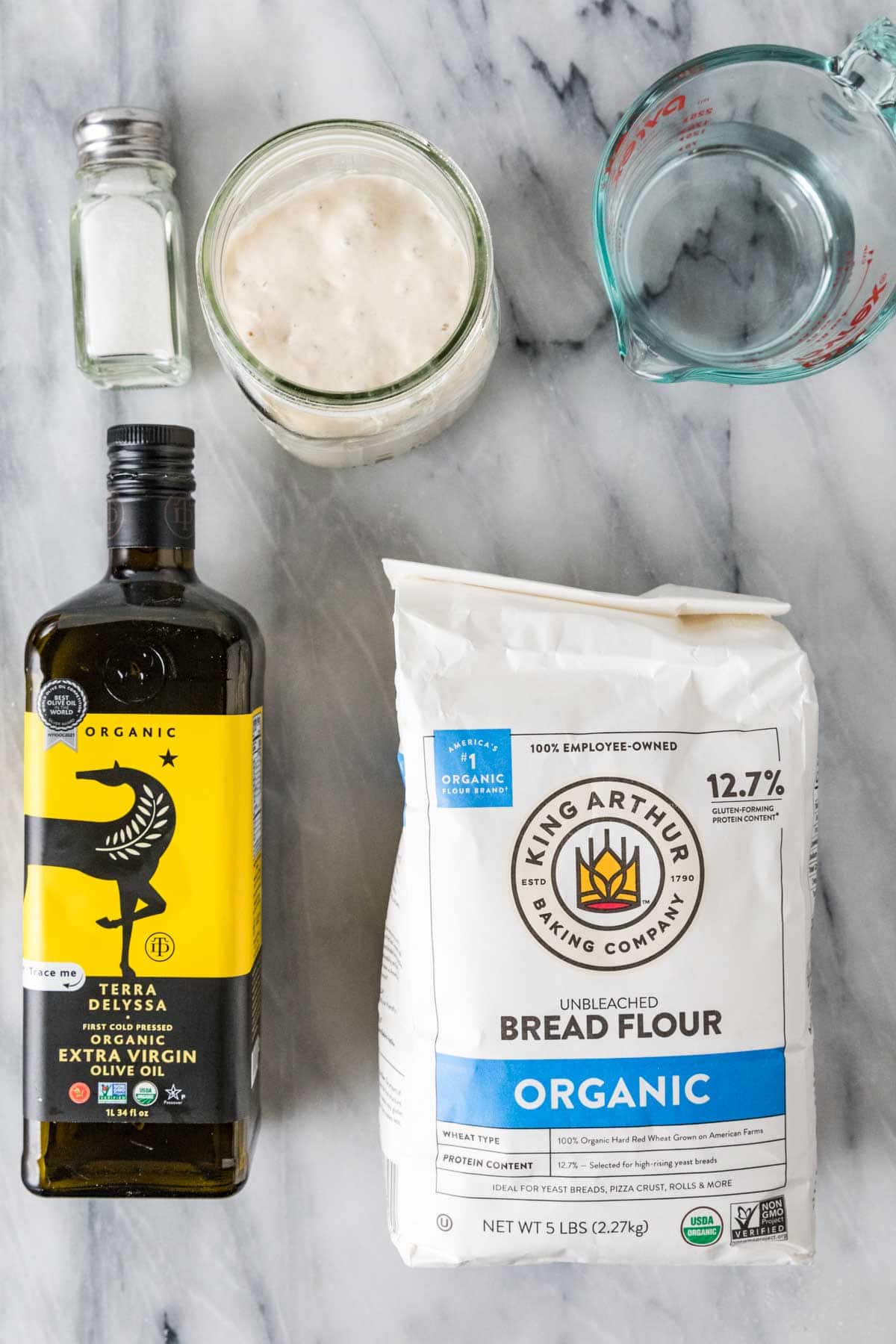
- Sourdough starter. This can be homemade or store-bought. Obviously, I recommend making your own by using my sourdough starter recipe (this does take over a week to prepare, but it’s worth it!).
- Bread flour. I really recommend bread flour over all purpose for my sourdough bread recipe. Bread flour has a higher protein content and produces a better-crumbed sourdough bread, in my opinion. If you don’t have it, all-purpose is not as great but will be “fine”, but try it at least once with bread flour.
- Olive oil. A bit of olive oil helps make the bread perfectly chewy and soft. I also find it keeps my sourdough softer longer.
- Salt. Salt is critical for flavor (unsurprisingly) but it also plays some other important roles in sourdough bread. It helps balance the acidity from our starter, strengthens the gluten in the dough (important for shape and texture), and it even helps extend the shelf life of the bread by acting as a natural preservative. Don’t let anyone tell you it’s going to hinder your yeast, it won’t (or at least won’t to any noticeable degree and your sourdough will be worse off without it).
- Water. The water called for in my recipe will yield a sourdough loaf that is about 70% hydration. I love this hydration level; it produces a crumb that’s neither too dense nor too open, that’s not too sour but is still flavorful, and that is easy to shape and extremely versatile — we use it for everything from dipping in pot pie soup to eating sandwiches. Once you’re comfortable baking a bread at this hydration level, you can experiment with increasing the water if you’d like. More water usually yields a bread with a more open crumb, a more tangy flavor, and a crumb that’s less suitable for sandwiches but good for dipping.
I wrote this sourdough bread recipe with weights because I find it’s the easiest way to make it (just like with my macaron recipe); however, I have included cup measurements as well.
SAM’S TIP: While some people like to bake their sourdough bread in a dutch oven, I like to use a pair of bread pans. It doesn’t look as rustic this way, but it’s much more practical for my family to have a loaf of bread rather than a round of it. If you’re team Dutch oven, don’t worry–I provide instructions for how to make sourdough bread in a Dutch oven below.
Remember, this is just an overview of the ingredients I used and why. For the full recipe please scroll down to the bottom of the post!
How to Make Sourdough Bread
Make the Dough
The first 4 steps in my sourdough bread recipe are the “autolyse” period (or sometimes called an “inclusive autolyse” because we are incorporating all of our ingredients at this point). This step helps boost fermentation, improves the texture (more open crumb!) and flavor, and makes the dough easier to work with.
Note that I do, quite intentionally, include salt in this first step. Some bakers argue that salt will inhibit the yeast growth and negatively impact the crumb. Not so! With the duration of this autolyse and the composition of this particular sourdough bread recipe adding salt at this stage does not make a difference. Leaving it out for this step only makes it more difficult to incorporate later and increases your likelihood of accidentally forgetting to add it altogether (which would be a shame!).
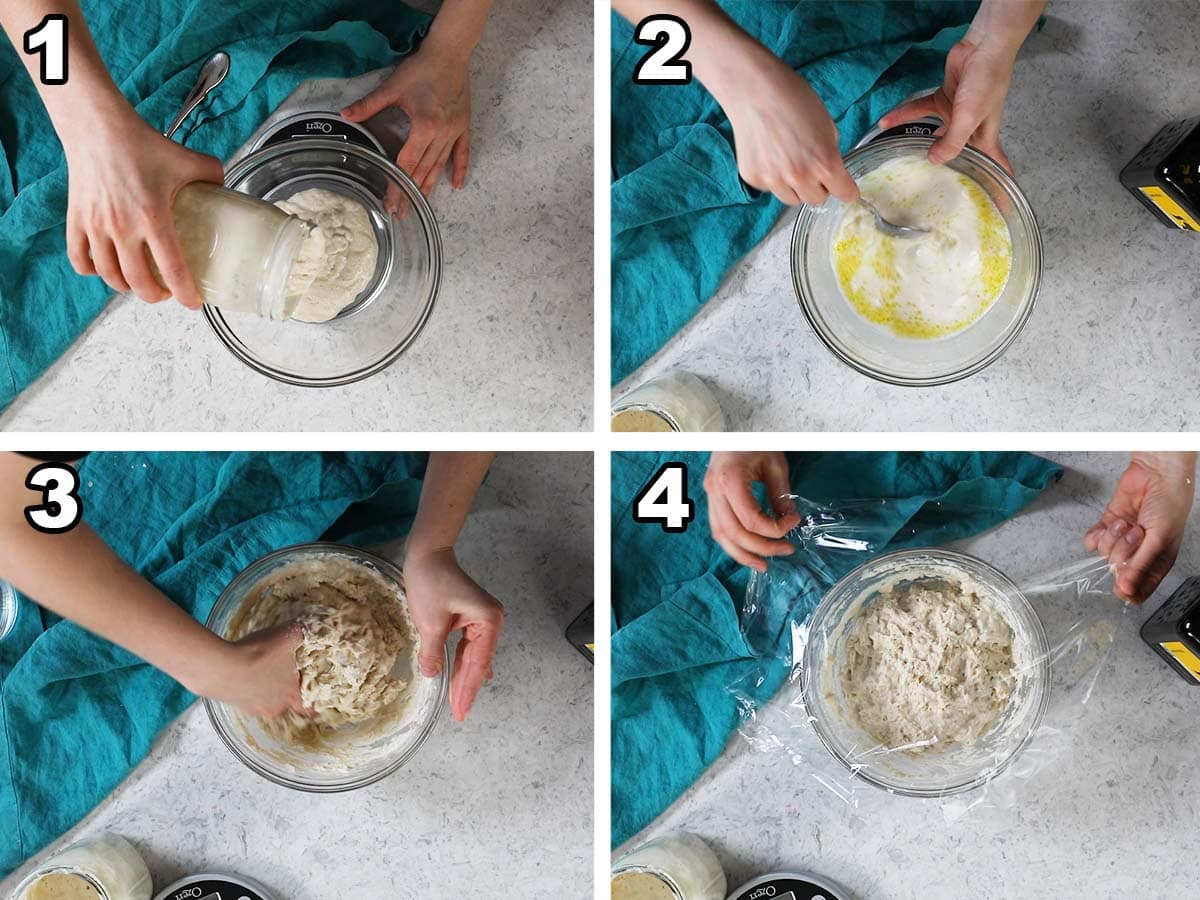
- Combine sourdough starter, water, and oil in a large bowl. Make sure your starter is active and bubbly before adding it.
- Add the bread flour and salt.
- Stir until mostly combined (your dough will still look shaggy). Do not over-mix!
- Cover and let sit at room temperature for one hour.
Stretching & Folding Your Sourdough
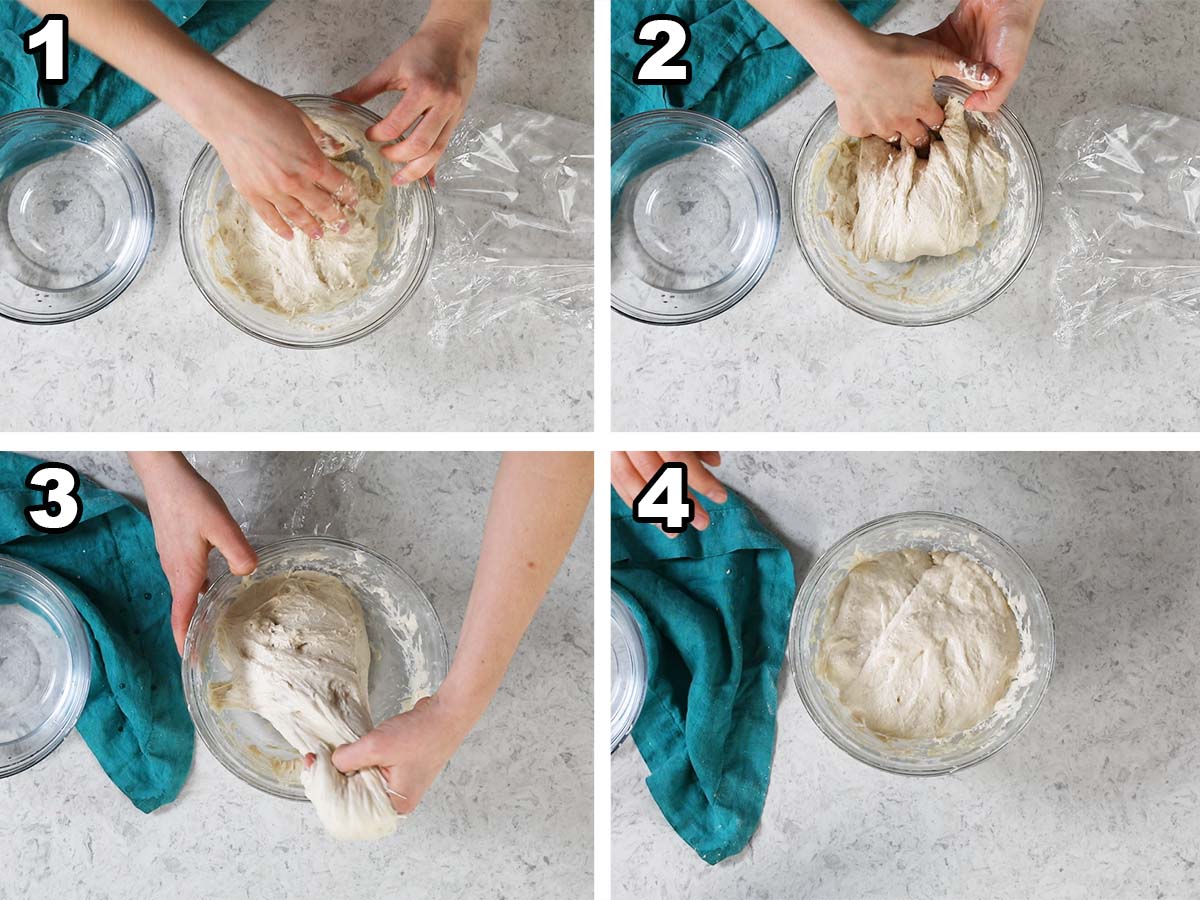
- Form your dough into a ball using your hands, the run your hands under cool water.
- Stretch the top of the dough up and over the bottom, then turn the dough 90 degrees and repeat. I demonstrate this in the video below if you need a better visual.
- Repeat the stretch and fold process a total of four times, then cover and place in a warm place to rise for 30 minutes.
- Let your dough rise until increased in size by 80%, repeating the stretch and fold process every 30 minutes.
Assembling
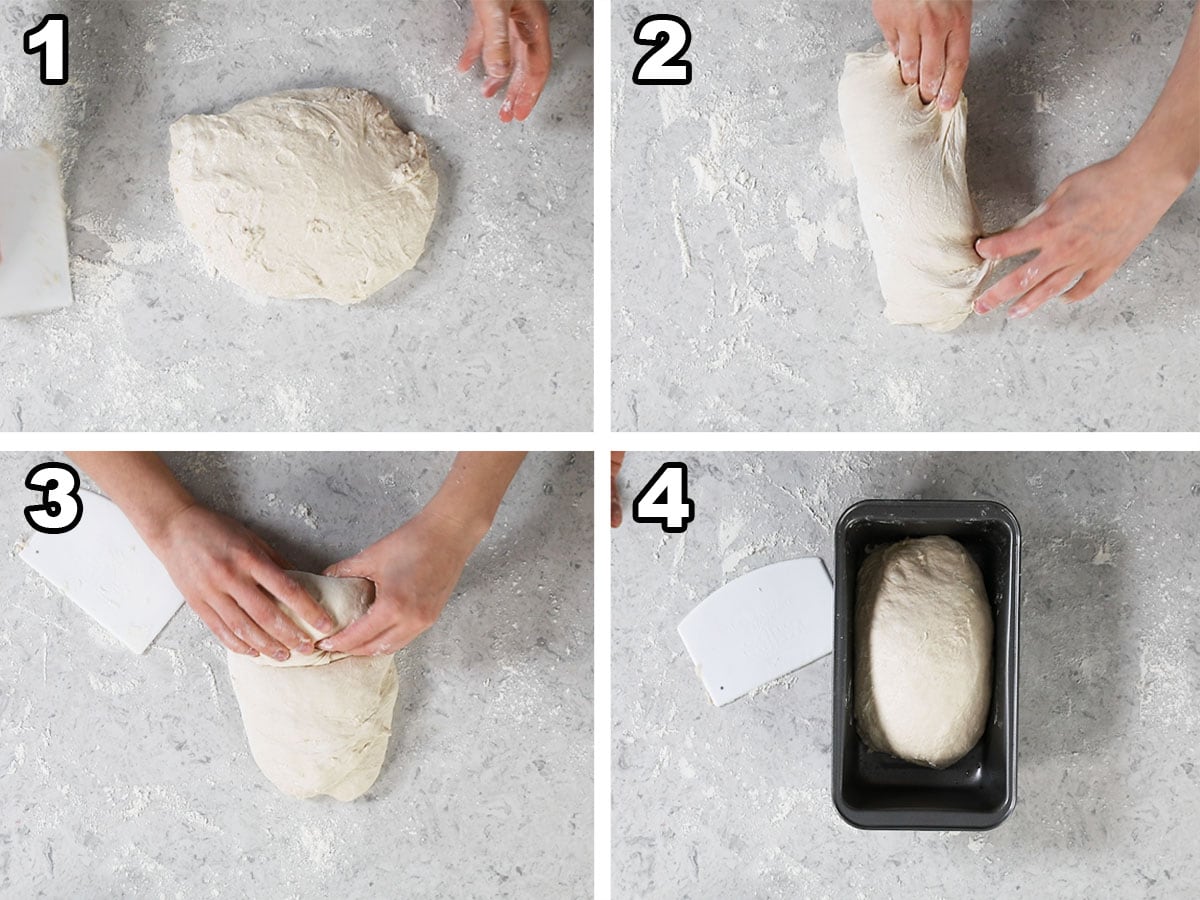
- Deflate and form your dough into a rectangular shape on a lightly floured surface.
- Lift the right side of the dough, fold it over to the center, then repeat with the left side (like folding a paper in thirds).
- Roll into a tight log starting with the short end of the rectangle, then tuck the ends under.
- Place in a greased bread pan, cover loosely, and place in the fridge to rest overnight.
SAM’S TIP: I recommend proofing your dough in the refrigerator overnight rather than baking right away (I also provide instructions for baking right away, though). Proofing overnight will help develop the flavor, help the bread rise better, and encourage more fermentation. That being said, I don’t like to let my dough sit in the fridge for longer than 48 hours (absolute max) before baking. Letting it sit too long can cause over-proofing and can compromise the final texture of your sourdough bread. I also don’t freeze my dough before baking, so I can’t advise on that.
Baking
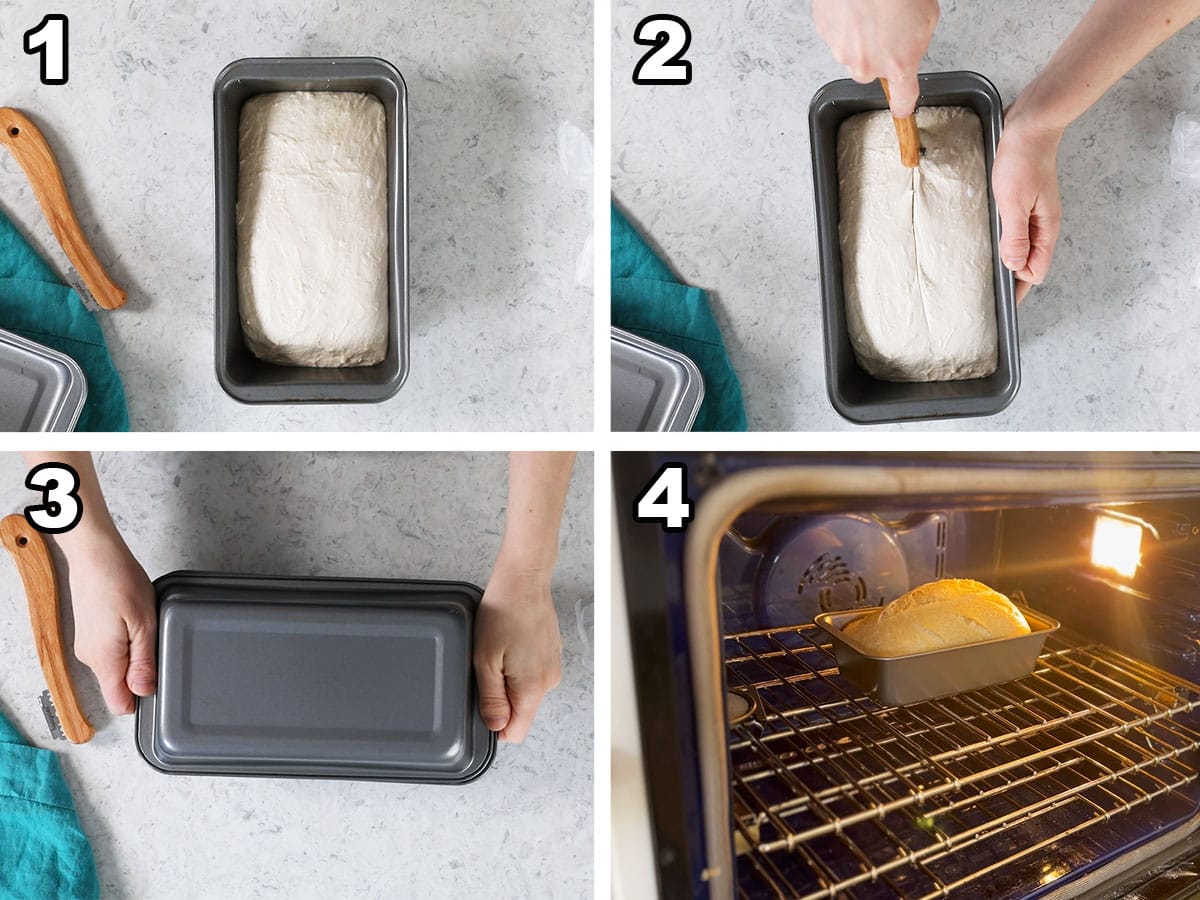
- Let the dough rest at room temperature while your oven preheats.
- Score the bread about ¼″ deep down the center.
- Cover with another bread pan or an aluminum foil tent.
- Bake at 450F for 30 minutes, then remove the cover and bake for 20-23 minutes or until the bread reaches an internal temperature of 206F (97C).
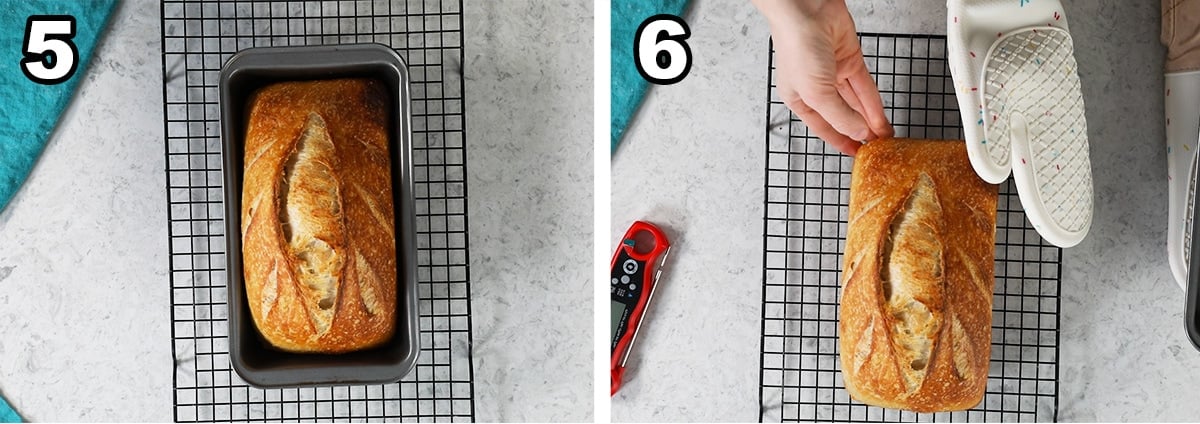
- Let the bread cool in its pan for 15 minutes.
- Remove the bread from the pan (carefully, it’s still hot!) and place on a cooling rack. Don’t let it sit in the bread pan too long, or your sourdough bread could end up soggy from the steam that it releases in the pan that can’t escape. Once removing to a cooling rack, allow the bread cool completely (or at least almost completely) before slicing.
SAM’S TIP: Don’t cut into the bread while it’s still warm (I know, so hard, so tempting!). Doing this can make your loaf gummy and dense.
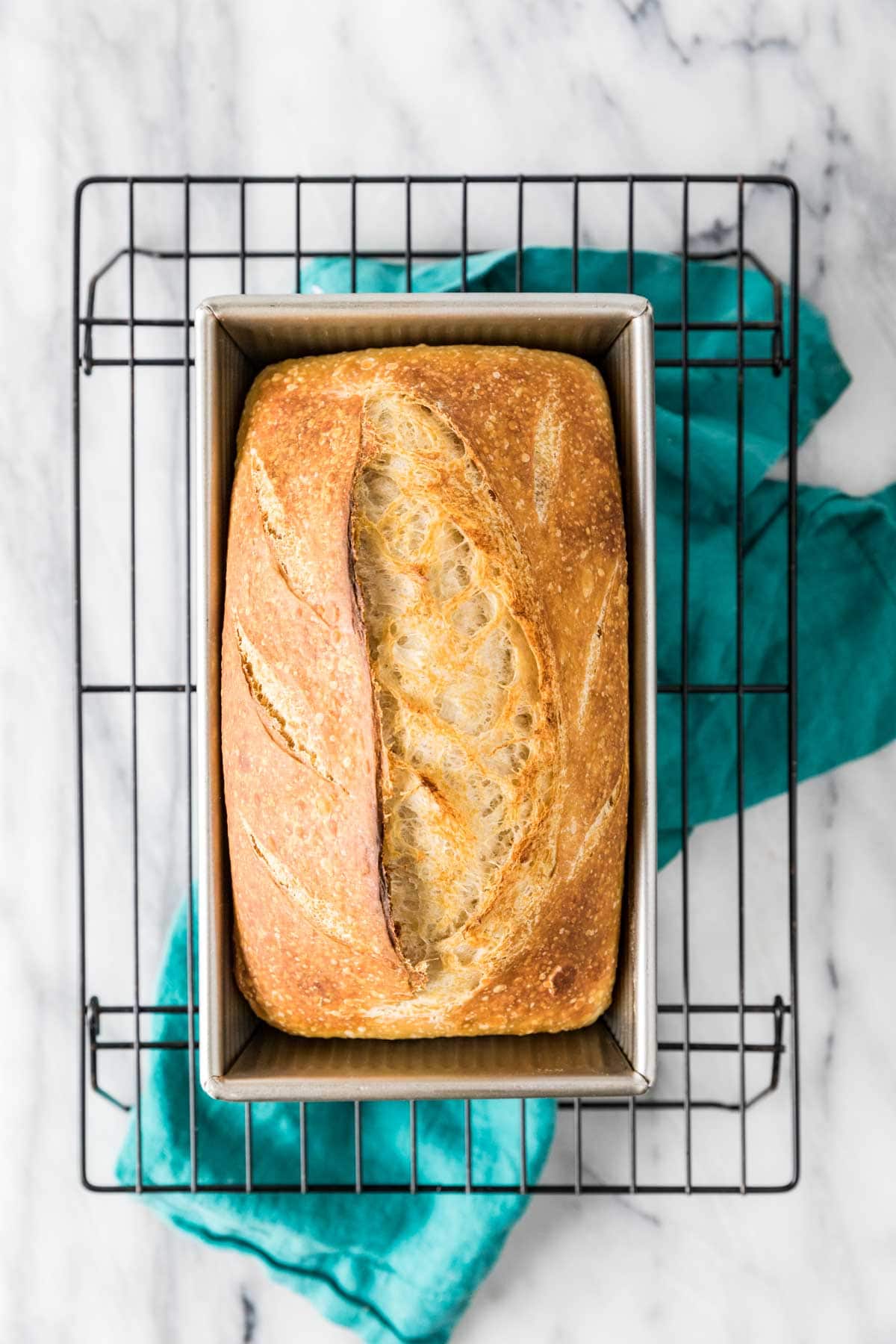
Frequently Asked Questions
Sourdough is definitely one of the more nutritious types of bread. It’s prebiotic-rich, made by fermenting dough with wild yeast and bacteria (sounds not-so appetizing but in reality is delicious) and is more digestible than your standard white bread. It also has a lower glycemic index and less gluten than normal bread. If you’re going to be indulging in bread, this is arguably a better option than standard white bread.
While a traditional sourdough bread recipe is obviously not gluten free, sourdough bread is sometimes tolerated by people who are gluten sensitive (but not people with Celiac Disease). This is because some of the gluten is consumed during the fermentation process, which makes the bread more easily digestible.
Yes, of course! I wanted to share an easy sourdough bread recipe that can be made with basic kitchen equipment, but you can just as well use a Dutch oven. Follow the written recipe through the rolling and tucking step, then place the dough in a lightly floured banneton (I use my Kitchenaid mixer bowl lined with a lightly floured kitchen towel, because I don’t actually have a banneton). Cover and let rise overnight in the fridge.
The next day, carefully turn out your dough onto a large piece of parchment paper and carefully lower this into a 4.5qt Dutch oven (a larger one would work, but your bread will be flatter and will likely cook faster). Allow the dough to sit uncovered while the oven preheats, then score, cover with a lid, and follow recipe instructions for baking.
You can preheat your Dutch oven (as I do in my artisan bread recipe) to make it nice and hot before adding your dough if you’d like, but honestly I rarely do this step with this recipe.
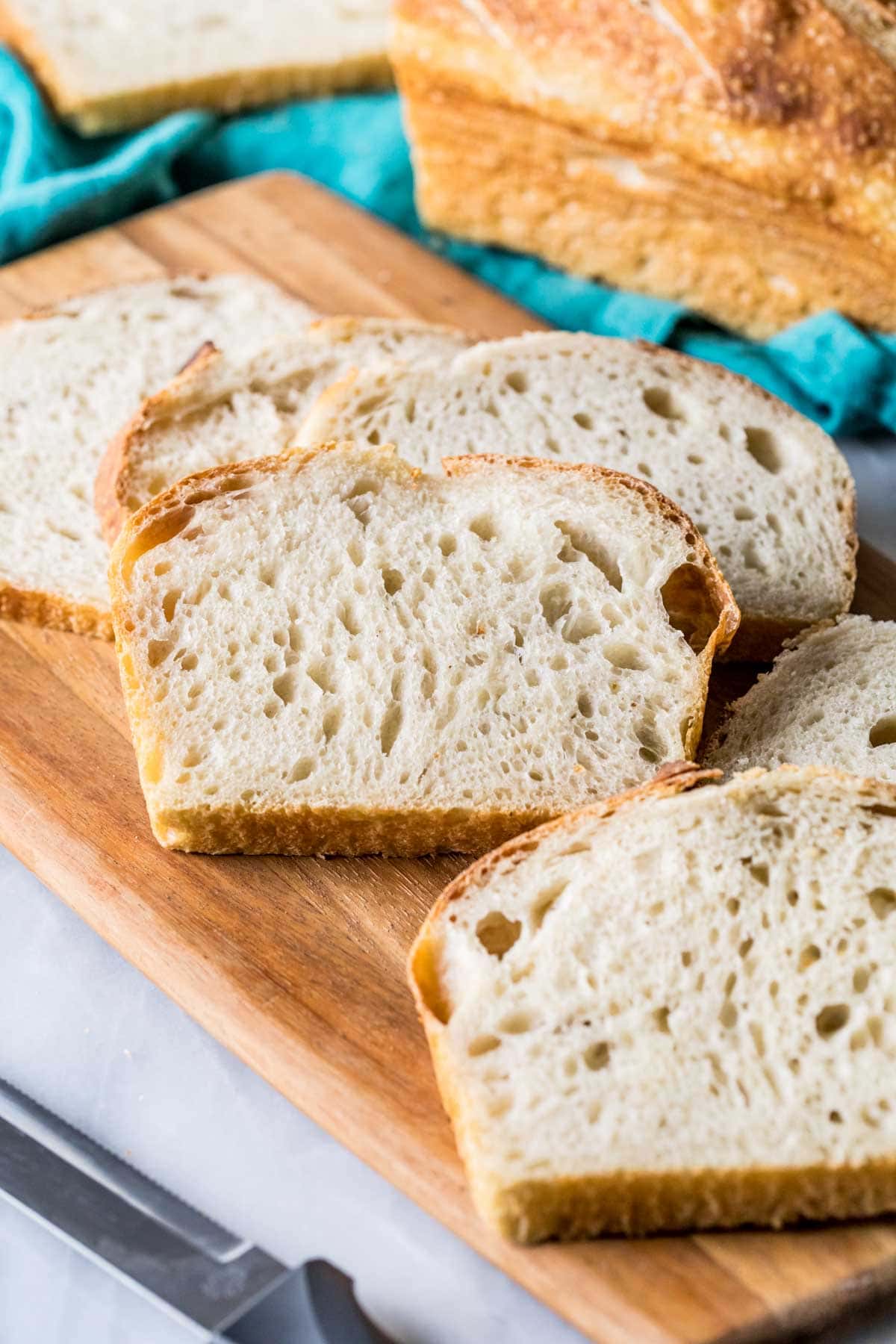
I know that there are many sourdough bread recipes out there and so many different ways to make it, but this is my personal favorite version that I’ve carefully developed over the past year. I can’t wait to hear how you like it (let me know in the comments!), I hope you’ll always want to keep a loaf in your house, too! ❤️
Enjoy!
If you try this recipe, be sure to tag me on Instagram, and you can also find me on YouTube and Facebook
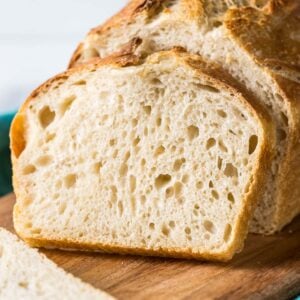
Sourdough Bread Recipe
Ingredients
- ⅔ cup (150 g) active starter bubbly, active, fed
- 1 ⅓ cups (315 g) warm water 90F
- 1 ½ (18 g) Tablesoons olive oil
- 3 ⅔ cups (450 g) bread flour
- 2 teaspoons (13 g) table salt
- Oil for greasing pan
- Additional flour for dusting work-surface
Recommended Equipment
- Bread lame (optional, or use sharp knife)
Instructions
- In a large mixing bowl, combine sourdough starter, water, and olive oil. Stir until combined.⅔ cup (150 g) active starter, 1 ⅓ cups (315 g) warm water, 1 ½ (18 g) Tablesoons olive oil
- Add bread flour and sprinkle salt overtop. Use your (clean) hands or a wooden spoon to stir together until dough is mostly combined. It will still be a bit shaggy and should not be cohesive (don’t over-mix) but no dry patches of flour should remain.3 ⅔ cups (450 g) bread flour, 2 teaspoons (13 g) table salt
- Cover bowl with plastic wrap and let sit undisturbed for one hour (this is the “autolyse” period).
Stretch & Fold
- Form dough into a ball with your hands.
- Run your hands under cool water (prevents sticking!) and grasp the top of the dough and stretch it over the bottom. Turn the dough 90 degrees and repeat. Turn 90 degrees and repeat again, then once more (four total stretch & folds).
- Allow dough to rest, covered, in a warm place for 30 minutes.
- Repeat step 2 above every 30 minutes as dough rises.
- Allow dough to rise (stretching and folding every 30 minutes as indicated) until dough has increased in size about 80% (how long this takes depends on the temperature of your kitchen, typically mine is ready within 4-6 hours).
Forming the Dough
- Lightly grease a 9×5 loaf pan (with olive oil or butter) .Oil for greasing pan
- When dough has risen sufficiently, turn it out onto a clean, lightly floured surface.Additional flour for dusting work-surface
- Use your hands to gently deflate the dough and pat it into a rectangular shape. Lift the right side of the dough and fold it into the center (almost as if you were closing a book). Then, lift the left side of the dough and fold it over the first fold (use a bench scraper if the dough is sticking to your counter).
- Starting with a skinny end, tightly roll the dough, as if you were rolling up a cinnamon roll. Tuck the ends under and carefully transfer to prepared bread pan. Don’t worry if the bread doesn’t fill the pan right now.
- Cover pan tightly with plastic wrap and transfer to the refrigerator to rest overnight/for 12-24 hours.
Baking
- Remove sourdough from the refrigerator and preheat oven to 450F. Let oven preheat and dough rest (covered or uncovered) for at least 30-35 minutes before proceeding.
- Once oven has preheated, uncover bread, make a clean slice (about ¼” deep) down the center with a sharp knife or bread lame (to score it) then cover with another 9×5 pan (if you don’t have a second pan, you may instead make a makeshift oven using aluminum foil; tent it as high as the bread pan is deep).
- Transfer to center rack of preheated oven. Bake, covered, for 30 minutes then remove the lid and continue to bake another 20-23 minutes/until golden brown and the center of bread reaches 206-208F (97C).
- Allow bread to cool in pan for 15 minutes before gently turning it out onto a cooling rack (careful, the pan will still be hot!) to cool for at least 1-2 hours (until it no longer feels warm) before cutting into it.
Notes
To bake the same day:
Follow recipe through step 4 under the “Forming the Dough” section. Immediately after transferring dough to pan, preheat oven to 450F (230C). Allow dough to rest uncovered while oven preheats, at least 30 minutes. Once oven is preheated, follow directions in recipe starting with step 2 under the “Baking” section. Note that bread will not be as flavorful or nutritious & texture will not be as great if it is not allowed to sit in the fridge overnight.Storing & Freezing
Store in an airtight container at room temperature for up to a week. You may also freeze this bread. Freeze the whole loaf by wrapping tightly in plastic wrap and then wrapping in foil. When ready to thaw, keep covered completely and defrost at room temperature before unwrapping. We prefer to freeze pre-sliced: Cut bread into slices and storing in a plastic Ziploc bag (remove as much air as you can before freezing). If you struggle with freezer burn or plan to freeze the bread longer than a few weeks, you can individually wrap each slice in plastic wrap before closing in the plastic bag.Nutrition
Nutritional information is based on third-party calculations and should be considered an estimate only. Actual nutritional content will vary based upon brands used, measuring methods, cooking method, portion sizes, and more.

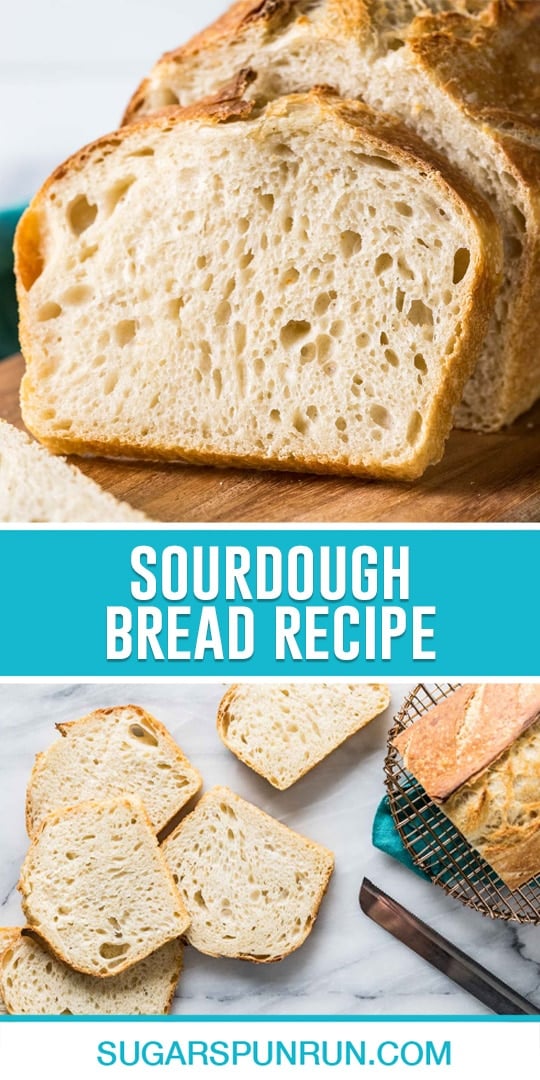
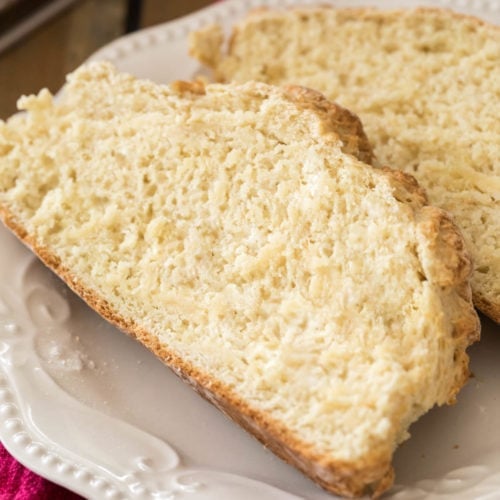
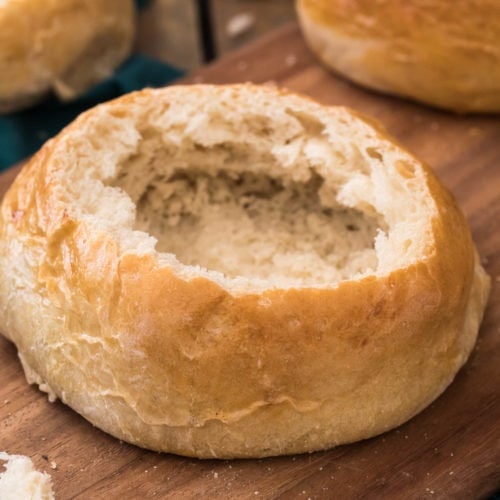
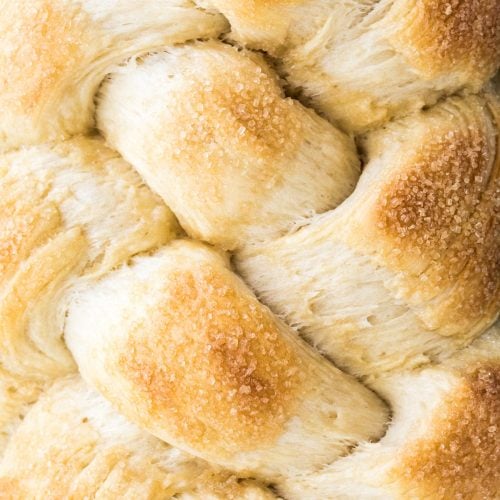
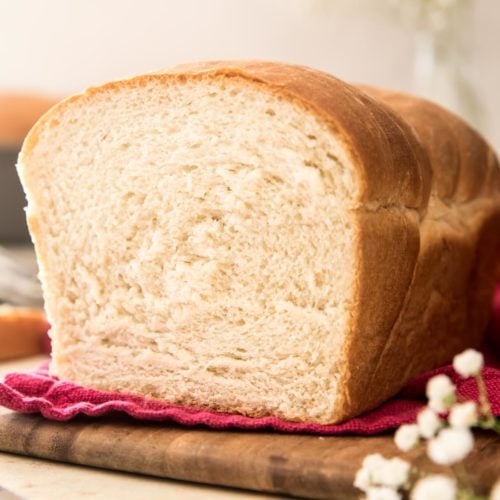
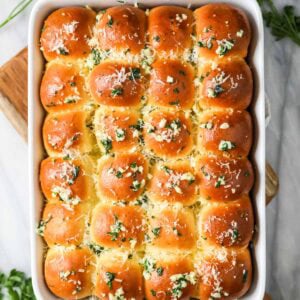



Janan
Hi Sam,
When I make this bread my dough is really wet compared to my other recipe. I decreased the water to 300 g today but still very wet. The first time I made it, it turned out okay, but hard to work with the soft, squishy dough. Is my starter too wet? I don’t have this problem when I used my normal recipe but it uses 250g water and 500g bread flour. Any ideas?
Thanks
Sam
Hi Janan! Have you watched the video to see what my dough looks like when I make it? Sometimes you may need a touch more flour, but without being there to see what is going on I can’t say for sure what is happening.
Marie Gates
So glad to find a loaf pan recipe that is a more traditional sourdough (no yeast, butter, sugar, etc). I’ve made this several times and it’s great.
I don’t like a burnt crust, so I lowered the oven temp to 400 F for the bake, and it worked perfectly! 30 minutes covered and 20 uncovered gets the internal temp to the exact range desired (205-210F). the crust gets good and golden, too! The bread has a great flavor and a desirable crumb. So if your loaf is burning, try lowering the oven temp.
I found that other recipes recommend 4-6 stretch-and-folds, then resting the final 2 hours for the first rise. When I continued to stretch and fold every 30-45 minutes, each one was like a big punch-down. Maybe stretch-and-folds for the first 3-4 hours, then rest until expanded the 80%? That has been working better for me.
Andrew Corbin
10/10 would recommend. Thanks Sam.
Sam
Thank you so much! I’m glad you enjoyed it! 🙂
Jacklynn
This recipe turns out great 👍
Thank you!
Sam
I’m so glad you enjoyed, Jacklynn! I hope you find more recipes here you enjoy just as much! 🙂
Dalise Jackson
My third attempt at sourdough and this was a 10/10. The recipe is easy to follow and the added video was great. Thanks so much for making my weekend great!
Michelle
This is by far the easiest recipe to follow that I’ve used. I’ve make about 4 loaves now using this recipe! My proofing time usually takes longer than 4-6 hours but after the first couple hours, I tend to just do a stretch and fold whenever I remember to do one and not worry about it too much. Because it’s going in a loaf pan anyways I kinda just do what I have time for and let the pan handle the rest in regards to shaping too! I have realized the loaf is easier to cut the second day than the first day. I really enjoy this recipe and the process seems to go very smoothly. Thank you for sharing!
Sam
Thank you so much for the kind feedback, Michelle! I’m so glad you enjoyed the sourdough and hope you find some other recipes around here that you like just as much! ❤︎
Heather
If I divide one batch into 2 smaller loaves to bake in the dutch oven, how long do I bake each smaller loaf? LOVE this recipe!!
Sam
Hi Heather! I use a 4.5 qt and it will make a single one. The bake time would be the same. If you split it and make 2 smaller ones your bake time will vary and I can’t say for sure how long it would need to bake.
Openn Kotecki
Hello, I followed the recipe exactly except I omitted oil. Once proofed overnight in the fridge, my dough seemed too big for my baking pan. I covered with another matching size pan and when I took off the top to brown, it was quite a crazy shape! My dough was a bit mushy and hard to score so perhaps it was overproofed. The bread itself was perfection in flavor and texture (not as sour as my typical bread). Anyway, I need to work on shaping my loaf :).
Lyn
Lovely. Absolute perfection!
Beth
This was great help! I’m going to try my first loaf today with starter my daughter gave me! So excited! Thank you Sam!
Cassie
In the recipe it says use 2 loaf pans but no where else it says to split the dough in half and put in two pans. Is the recipe for 2 loaves or 1? Thanks!
Sam
Hi Cassie! The second pan will come in during step 2 of the baking process. 🙂
Renee
Recipe makes one loaf. The second loaf pan is to cover the bread while it’s baking for the first 30 minutes.
bri
Hi I read olive oil should not go above 200 degrees celcius. Can I do the bread at that temperature? Or omit the olive oil
Sam
Hi Bri! You need to worry about the olive oil reaching it’s smoke point in things like frying. It doesn’t apply to baking it. 🙂
bri
Hi why is it ok to bake to a high temperature but not to fry to the high temperature?
Cass
I haven’t made this one yet, but it does say for the last rise after you put your dough in the pan, you cover it with the 2nd loaf pan to give it space to rise 😊
Jacob
Thank you for the recipie. I changed it up a little bit and turned out amazing for me I left my dough in a bowl for 24hrs then moved it to the bread pan for 45min before putting in the oven (by mistake was doing 2 different recipes) my cook time was about 7min quicker than you recommended just a heads up for other bakers. This is my best sandwich loaf I have made and I’ve used many different recipes. Thanks again!
Liz
Well I have no rating as of yet. I completely messed up🙄
I used all purpose flour and realized it after my third set of folds. I’m torn between continuing on or starting all over. Is this going to create a dense loaf of it even works? Your input appreciated!
Sam
Oh I would definitely keep going! Bread flour is my preference but the difference in results between that and all-purpose isn’t extreme and the loaf will still work just fine. Enjoy!
Kimmie
I could not believe my eyes! It looks what it should look. Amazing my first sourdough bread! Thank you for the recipe and carefully laid out detailed instructions.
Lynne
love this recipe. after 1 months my starter was finally ready, have made this twice and both did not last for a whole day in my house
Sam
I’m so happy you enjoyed so much, Lynne! Thank you so much for trying my recipe, I appreciate it!